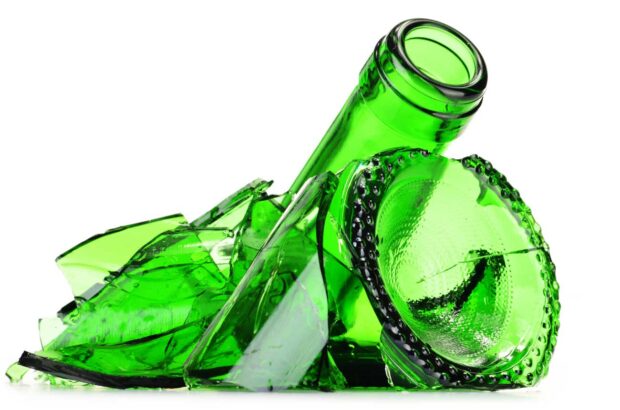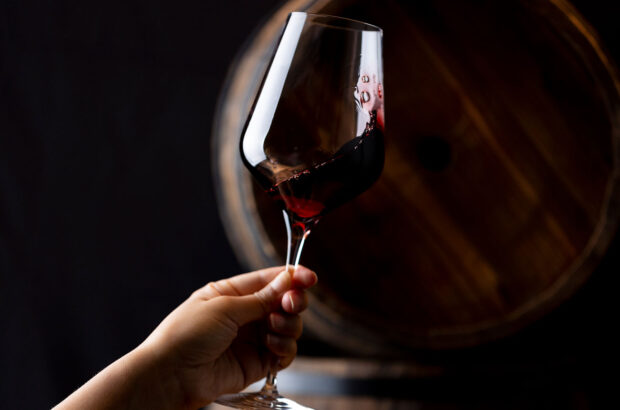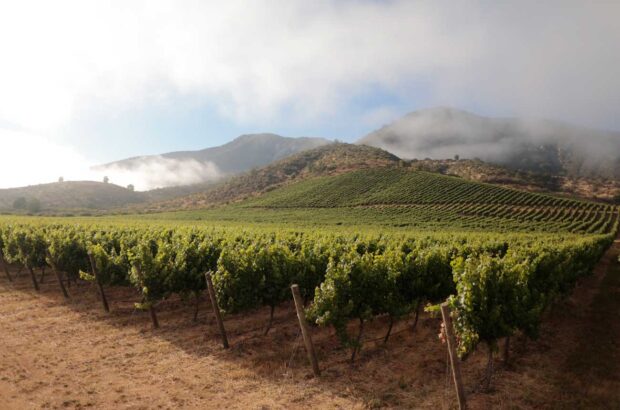Devastating frost has caused a 40% drop in the Bordeaux 2017 wine harvest and new estimates show the financial toll could reach 1.6 billion euros - even though weather during the flowering period and summer months was relatively kind to vines that survived. Jane Anson looks at the impact on several estates in the worst-hit areas, and how specialist pruners are hoping to get the vines back on-track for 2018.
The specialist pruners are busy this year. In a vintage following severe frost, it’s often the case that the usual team finds it difficult to cope with the abundance of shoots and canes that a vine starts throwing out, a reminder that these are at heart climbing plants that have been trained into submission by man over years.
Not only do the right canes need to be selected for training (as the one previously chosen will have been frosted away), but the pruned vine will be left afterwards with more scars than in a normal year, which need to be carefully treated to minimise the risk of ESCA and other trunk disease.
What this means is more time – most estimate up to twice as long – and more money for the affected Châteaux to spend.
They may even resort to calling in a team of external pruners who will charge a premium of around 20 to 30%, but are essential if the quality of the Bordeaux 2018 vintage is to be fully realised. The local Chamber of Agriculture is also getting involved, offering its own training courses on how to best prune affected vines.
The last few weeks have crystallised the fallout of the frost for those of us who are merely observers. We had the initial assessments from the châteaux last year, who with the pruning are now moving in to the cycle of this year’s harvest.
We’ve had the general stats that white Bordeaux production has almost halved between 2016 and 2017, with the red around 40% down from last year.
And that the overall financial hit, for both red and white combined, is likely to be around €1.6 billion according to the CIVB.
But with the Bordeaux en primeur system of early tastings just around the corner, we are beginning to see the results in terms of some châteaux announcing that they are simply not putting any wine in bottle.
The first names started appearing at the end of last year, with Château Fieuzal in Pessac Léognan reporting that it would be making neither red nor white wine, Fieuzal or the second Abeille de Fieuzal label, in 2017.
Last week we saw Château Climens in Barsac joining it, with owner Bérénice Lurton announcing that the estate conducted a ‘grape hunt’ during harvest, but still only managed to produce 2.5 hectolitres per hectare – roughly one barrel per hectare and a record low.
‘This doesn’t give us enough ‘materia prima’ to make a honourable Climens, so we have naturally decided not to make any first wine in 2017,’ said Lurton, adding that this was the first non-production for them since 1993.
Just a few miles further north in Graves, Château Chantegrive will be making no red wine at all.
There will be just a few thousands bottles of their top bottling of white wine, Cuvée Caroline, ‘because the Semillon shone this year, and were not affected by either the frost or the early September hail storm that took out so much of the remaining vineyard’, said Hélène Levêque, Chantegrive’s general manager.
See also: Bordeaux 2015 in the bottle – Jane Anson’s top scorers on the Right Bank
It must be said at this point that frost damage was by no means uniform and, even in the worst-hit zones, not everybody suffered to the same extent. Château Suduiraut, in Sauternes, has said that frost only affected its ‘secondary plots’ of vines, for example.
Large parts of the Médoc were spared, and weather conditions across Bordeaux were good during flowering, with vineyards further boosted by a dry summer – helping the vines that survived the frost. See the map below this article for more detail.
However, it’s clearly been a difficult time for some on the Right Bank, in particular.
Château Grand Mouëys in Capian (AOC Cadillac Côtes de Bordeaux) has announced that it is making no white wine at all, while the Ducourt family will bottle no Château Jacques Noir (AOC St-Emilion), no Château Plaisance (AOC Montagne St-Emilion) and a tiny quantity of Demoiselles (AOC Castillon Côtes de Bordeaux).
We will no doubt hear of more over the next month – I believe 15 February is the deadline for winegrowers to inform their local syndicates exactly what will be going into bottle.
For the rest of the estimated 70% of affected producers, there are a number of different ways to deal with drastically reduced production, and it’s interesting to see what’s emerging.
For Château Fleur Cardinale in St-Emilion, only the highest part of the estate managed to escape the frost.
This was the ‘limestone heart’ as Caroline Decoster put it, where the vines are largely Cabernet, so giving an unusual blend for an estate that is planted to 70% Merlot. The blend in 2017 will be 35% Cabernet Franc, 20% Cabernet Sauvignon and 45% merlot, from eight barrels instead of the usual 350.
‘This equals around 2,000 bottles,’ Decoster told me this week, ‘but we have decided to put them all into magnum, to make something special out of what has been a difficult year.
‘So 1,000 magnums of an unusual blend, and we are extremely happy with the quality. We wouldn’t have done this if we didn’t believe that what has been produced wasn’t exceptional.’
This means that Fleur Cardinale 2017 will still be sold en primeur (although good luck getting hold of any) but will not be tasted through the usual routes during the tasting week, as there will be so few samples available.
Another big name missing from the usual tasting rounds of en primeur will be Château Corbin, another casualty of the St-Emilion frosts. The only plot to survive the frost here was 25ares (one are is 100m2) of four year old vines.
‘I couldn’t give those young vines the responsibility of carrying Château Corbin all by themselves,’ Annabelle Bardinet rather beautifully explained to me.
‘So we will only be making a small amount of second wine, maybe 5,000 bottles. It was not a difficult decision to make, but it was very sad.’
And if there is a silver lining, it took Caroline Perromat at Château Cerons to point it out. Cerons produced 50% of its normal amount of wine, because the vines next to the river survived untouched, but the ones on the plateau next to Chantegrive were entirely wiped out.
‘It’s difficult time of course,’ she said. ‘We only re-launched under the Château Cerons name in 2012, and already made no wine at all in 2013, so it is difficult to take the loss again.
‘But it is also a time to reflect on your strategy and to make a team decision about what to do. These tough years really make you think about what you want and what is important to you.’
Where the frost struck worst in Bordeaux in April 2017
The worst-hit areas are highlighted in red.








